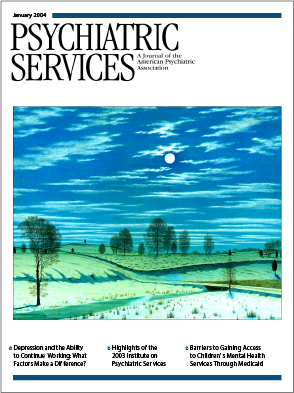Advancing DSM: Dilemmas in Psychiatric Diagnosis
It is generally acknowledged that DSM-III accomplished vast improvement in diagnostic reliability, and it is often forgotten just how bad the situation was before DSM-III. It was not that psychiatrists could not describe patients well but that each had his or her own idiosyncratic set of diagnostic criteria, so that interclinician diagnostic communication was largely a sham.
The contributors to Advancing DSM: Dilemmas in Psychiatric Diagnosis all agree that improvements in DSM are necessary with regard to validity. What seems absent from most discussions is the recognition that validity is not a single thing to be estimated but is related to the purposes of the validation.
For clinical purposes the validity of diagnoses rests almost entirely with prognosis and therapeutics. That is, does making a diagnosis allow improved prediction about course and outcome, or responsiveness to various therapeutic interventions? Insofar as DSM is primarily a guide for practitioners—and only secondarily for researchers—any advances should improve prognosis and therapeutic choice. This viewpoint is not consistently followed in Advancing DSM. For example, the introduction states: "Problems with DSM-IV are faced every day by clinicians (problems such as the high frequency of comorbidity or the intellectual incoherence of axis II)." Those are not major concerns for clinicians, although they do present problems to nosologists. As the editors state, "An accurate diagnosis is a foundation for selecting the best treatment, determining prognosis, and enhancing understanding of the patients."
Some of the comments in the book are historically inaccurate. Eric D. Caine, M.D., states: "Our field now is in its second quarter century of a movement to define the biological and etiological underpinnings of psychiatric disorders by creating relatively homogeneous clinical clusters. This derives from the belief that strict syndrome boundaries are related to definably separate pathogenic mechanisms and, in turn, to distinct etiological processes."
This was not the view of the DSM-III task force that considered syndromes as only the most useful categorizations possible, at the time, for psychiatric disorders without asserting etiological unity within a syndrome. However, Caine may be implying that if one is searching for differential etiology or pathophysiology, payoff seems more likely to result from contrasting well-defined syndromes than from searching within poorly defined patient groups. There must be an iterative process whereby patients are subcategorized by biological distinctions—relevant to symptom pattern of course—and then clinically contrasted. Ideally, this process should bring one closer to the pathophysiological process while refining clinical criteria.
This short review cannot do justice to the multiple complex issues covered in this book. For those who wish to address a particular problem, the volume serves as a useful resource. I wish that collections of controversial essays would make the disagreements more transparent by pairing the articles with critical commentary, as is routinely done in behavioral and brain science.
Dr. Klein is professor of psychiatry at Columbia University in New York City.



